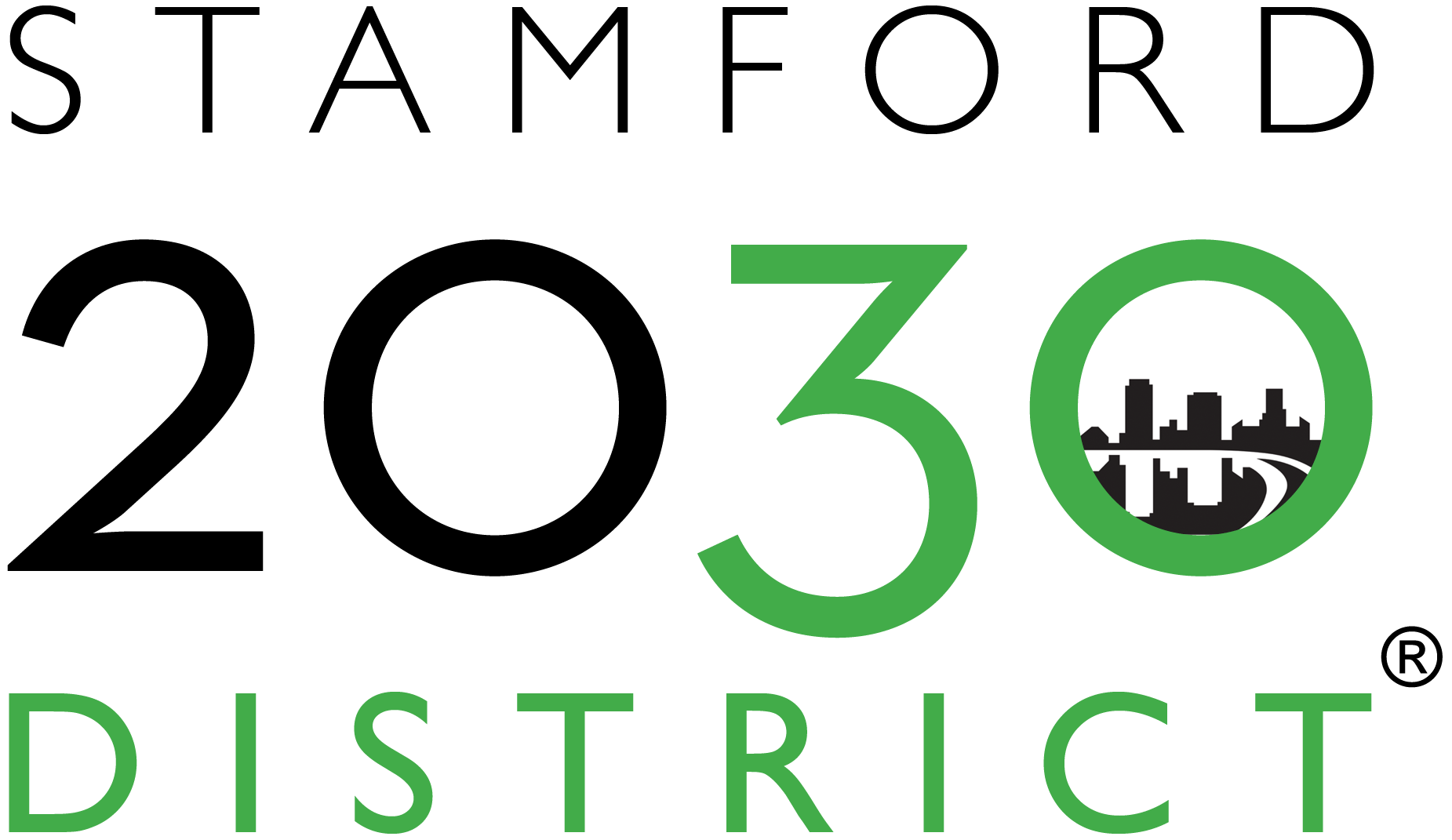How do you collect performance information?
Property owners and managers record their energy and water use in a free Energy Start Portfolio Manager account. They grant the Stamford 2030 District read-only access to this account. We do not share this information in an identifiable way without a property owner or property manager’s permission.
If we share water, energy and transportation information, how do we know this is secure? Who sees this data?
Published data will be aggregated for all reporting properties and will not identify the individual building owner, name, address or square footage unless the owner explicitly permits this. Data is only viewed by Stamford 2030 District Staff and Architecture 2030, and is not shared with the City of Stamford, other District Members, or third parties.
For more information see our confidentiality document.
Are projects certified as 2030 compliant or as meeting the goals of the Stamford 2030 District?
Owners can choose to publish their performance data as a case study through the District’s website or annual report, however, there is no certification program or public recognition program as the data is considered confidential. The Stamford 2030 District and Architecture 2030 are not certifying entities. However, all buildings participating, regardless of performance, will be acknowledged on the GBIG website along with various green certified buildings.
If I join as a developer, does this require our organization to meet the District’s performance requirements for all our future renovation projects and/or new construction projects?
Property owners, managers and developers are expected to make a good-faith effort to meet the District’s performance goals for the existing and/or new buildings under their control and in their portfolio within the 2030 District boundary. The timing for portfolio performance upgrades and/or the development of new properties is affected by a myriad of factors. There is not a requirement to bring individual existing buildings into compliance within a specific timeframe.
What’s the relationship between the Stamford 2030 District as a public-private partnership and the City of Stamford?
The Stamford 2030 District is a privately led, voluntary membership organization and participation is not required by any government entity. The City of Stamford supports the organization’s energy, water and transportation goals and to that aim has joined the District as a Community Member, as well as a Building Owner member.
What role does The Business Council of Fairfield County and The Connecticut Fund for the Environment play in the Stamford 2030 District?
The Stamford 2030 District was founded by the The Business Council of Fairfield County and the Connecticut Fund for the Environment. The District is currently a program of The Business Council of Fairfield County, a non-profit founded in 1970 aimed at mobilizing Fairfield County’s business, political and community leadership around issues critical to the region’s vitality as a business location. The Connecticut Fund for the Environment, founded in 1978, is a non-profit that uses legal and scientific expertise to bring people together to achieve results that benefit the environment for current and future generations, focusing on the protection and improvement of the land, air, and water of Connecticut and Long Island Sound.
How is the Stamford 2030 District related to or different from Architecture 2030, the AIA+2030 Professional Education Series, the AIA 2030 Commitment and other 2030 Districts around the United States?
The year 2030 is widely considered as the decisive deadline for achieving a carbon-free society in order to mitigate catastrophic climate change. In response to this crisis, the non-profit organization, Architecture 2030, was founded by Edward Mazria in 2002. This organization put forth the 2030 Challenge, a set of defined performance targets that incrementally step down carbon emissions from the built environment to zero emissions in the year 2030. To support this challenge, other organizations, such as the American Institute of Architects (AIA) have used these targets as the framework for programs such as the AIA’s 2030 Commitment. The AIA+2030 Professional Education Series is an education program created by AIA Seattle, in partnership with Architecture 2030, and is now provided by 23 AIA chapters and other partners throughout North America. 2030 Districts across the United States may vary in approach, however, they all establish performance goals based on the 2030 Challenge for Planners.
